5 Bikes That Embraced Forced Induction From The Factory
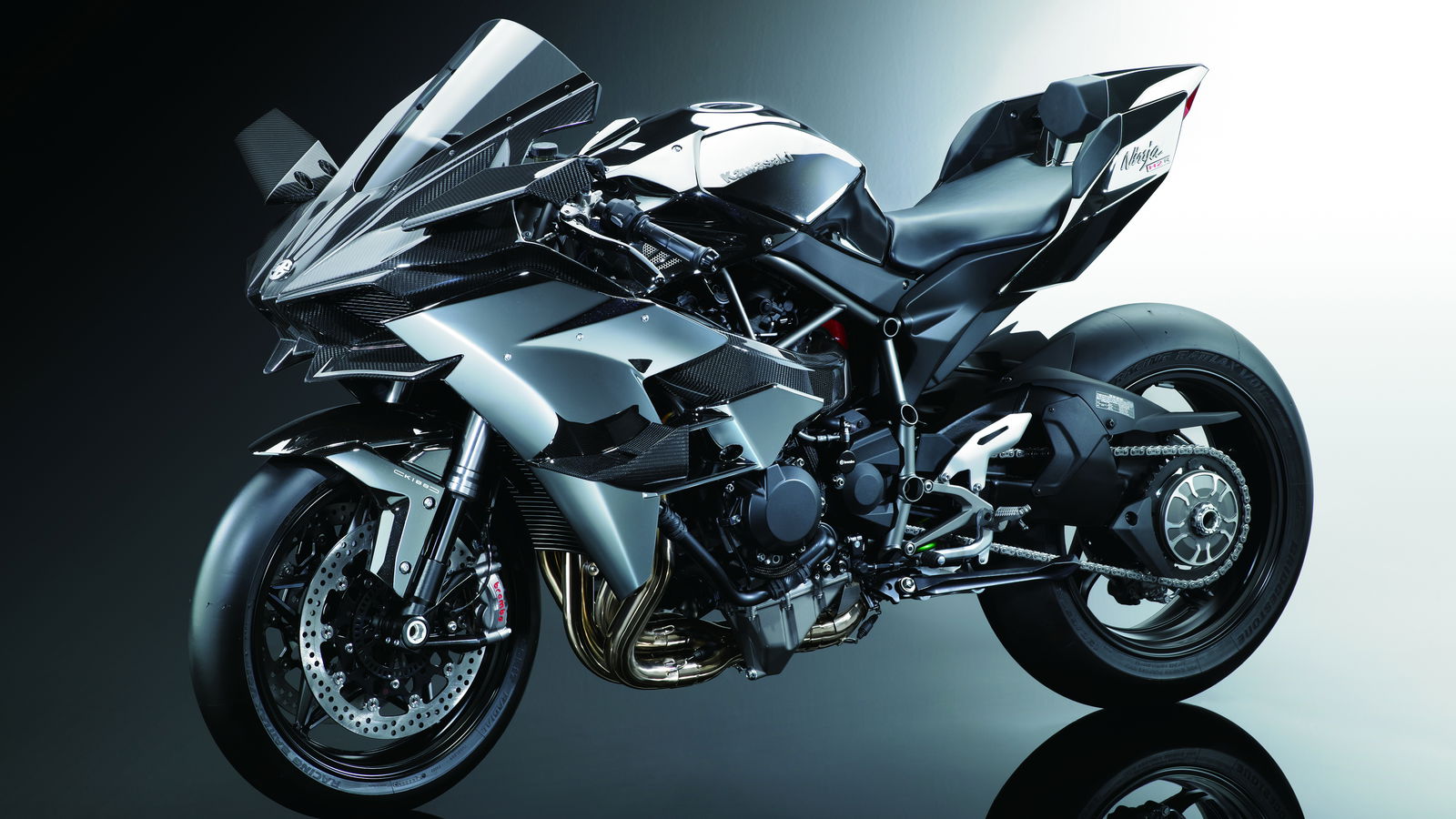
The 1980s was the decade of the turbocharger. The incredible Audi Sport Quattro S1 dominated in Group B, BMW got its M12/13 F1 engine producing 1400bhp, and the Ferrari F40 re-wrote the supercar rule book. But it wasn’t just the four-wheeled world that was going boost crazy. Tempted by the idea of high power and low capacity, motorcycle manufacturers also decided to experiment with the wonders of forced induction.
1. 1982 Yamaha XJ650 Turbo
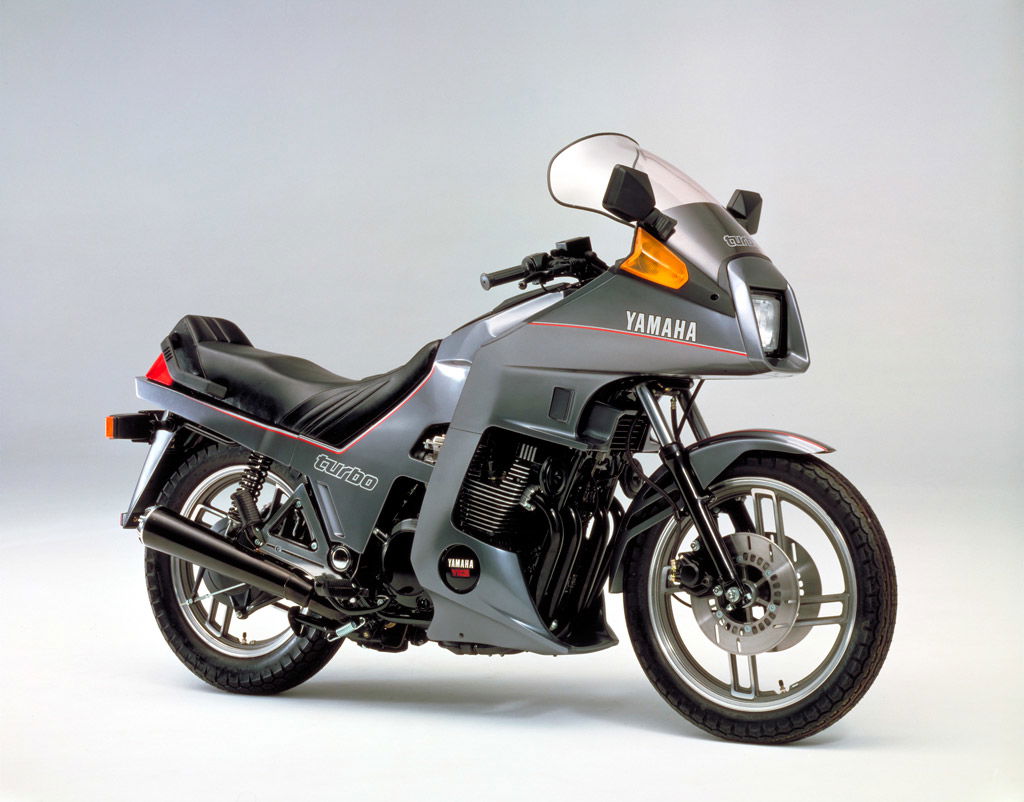
Yamaha was first to enter the turbocharging war with the frankly odd-looking XJ650 Turbo. A whopping 90bhp from a 650cc engine was impressive at the time, but the bike was by no means a full on sports bike. With a rear drum brake, power sapping shaft drive and a floppy chassis - sourced from the standard Yamaha XJ650 Seca - the XJ Turbo was more of a sports tourer.
The bike also used archaic 30mm Mikuni carburettors which gave it a fairly choppy throttle response; not what riders wanted, especially when the bike already suffered from significant turbo lag. Ultimately Yamaha ended up with a bike that had dodgy fuelling, an unsuitable chassis and astronomical maintenance costs. It also didn’t help that naturally-aspirated sports bikes like the Honda CB1100R could obliterate it in a straight line. Not surprising then that the XJ Turbo was discontinued after only two years. Not a great start to the turbo era.
2. 1982 Honda X500 Turbo - CX650 Turbo
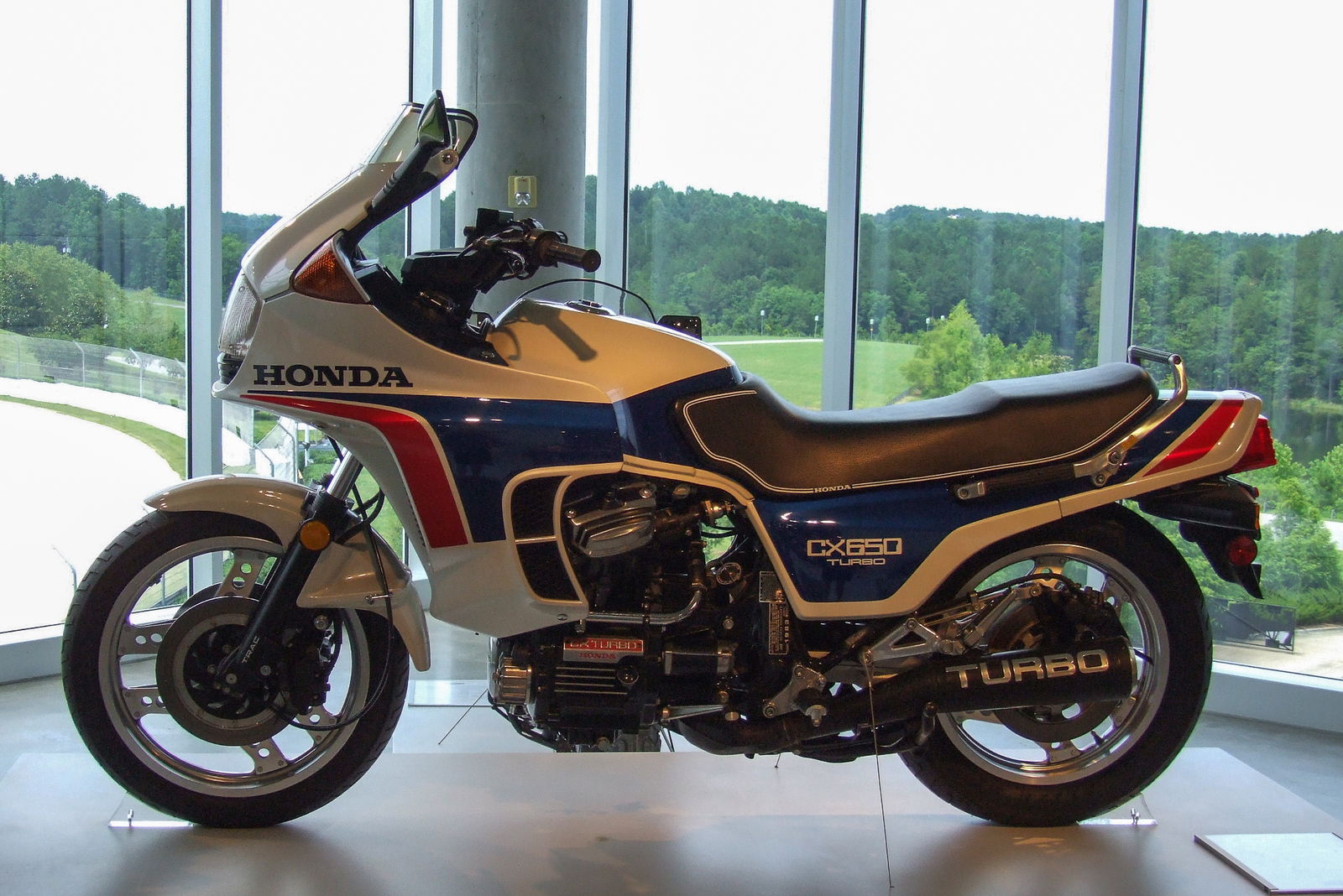
When Honda’s motorcycle division sets out to do something, it doesn’t do it by half. The Tokyo based manufacturer has always been able to produce bikes with class leading technology, all round capability and bomb proof reliability. And so it was with the X500 Turbo. At the heart of the company’s boosted project was the CX500’s tried and tested Moto Guzzi inspired pushrod V-twin. A simple engine with a good amount of low down torque. It had great potential.
The motor was fitted with a 19psi turbo and an innovative electric fuel injection system. The new injection system (Programmed Fuel Injection - PGM-FI) helped to refine throttle response and allowed Honda to incorporate a clever fail safe system which lowered the chances of a catastrophic detonation. The packaging was a complete work of art.
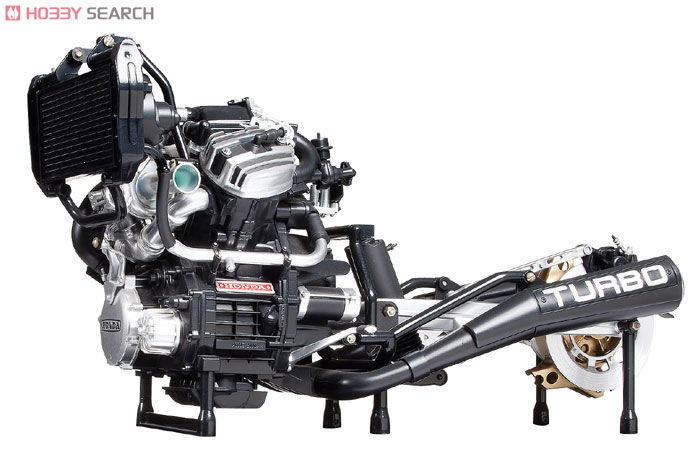
However, even with all of Honda’s engineering know how, the bike still suffered from appalling turbo lag. This put off a high number of potential buyers, so Honda quickly rectified the problem one year later with the CX650 Turbo. The fix (or shall we say improvement) wasn’t particularly innovative. Honda simply upped the capacity from 500cc to 674cc, and lowered the boost. Somewhat surprisingly, power increased from 83bhp to just over 100bhp. Unfortunately, with its expensive production costs the bike wasn’t made in huge numbers and it very quickly became uneconomical for Honda to sell. Production ceased in 1983.
3. 1983 Suzuki XN85
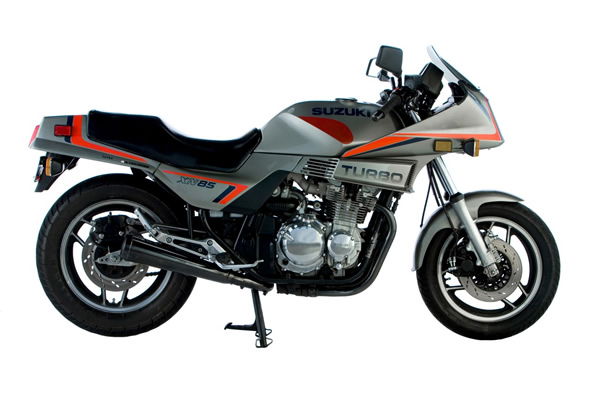
The Suzuki XN85 was produced in the same year as Honda’s X500 Turbo, leading to the Suzuki being somewhat overlooked. Even today, very few people are aware of the bike’s existence, which is a shame, because it was a brilliant package. Built as a realistic alternative to naturally aspirated sportsbikes, Suzuki focused on the chassis first, followed by the engine, a completely different approach to Yamaha. The bike featured the first factory 16-inch front wheel, monoshock rear suspension and numerous other goodies like racing foot pegs and handlebars.
The 673cc engine produced a respectable 85bhp and was the first motor to feature Suzuki’s Advanced Cooling System (SACS). Like the other turbo bikes on the list, it was complex to manufacturer, leading Suzuki to limit production numbers. As a result it wasn’t a big seller, but that didn’t stop it surviving for five years.
4. 1984 Kawasaki GPz750 Turbo
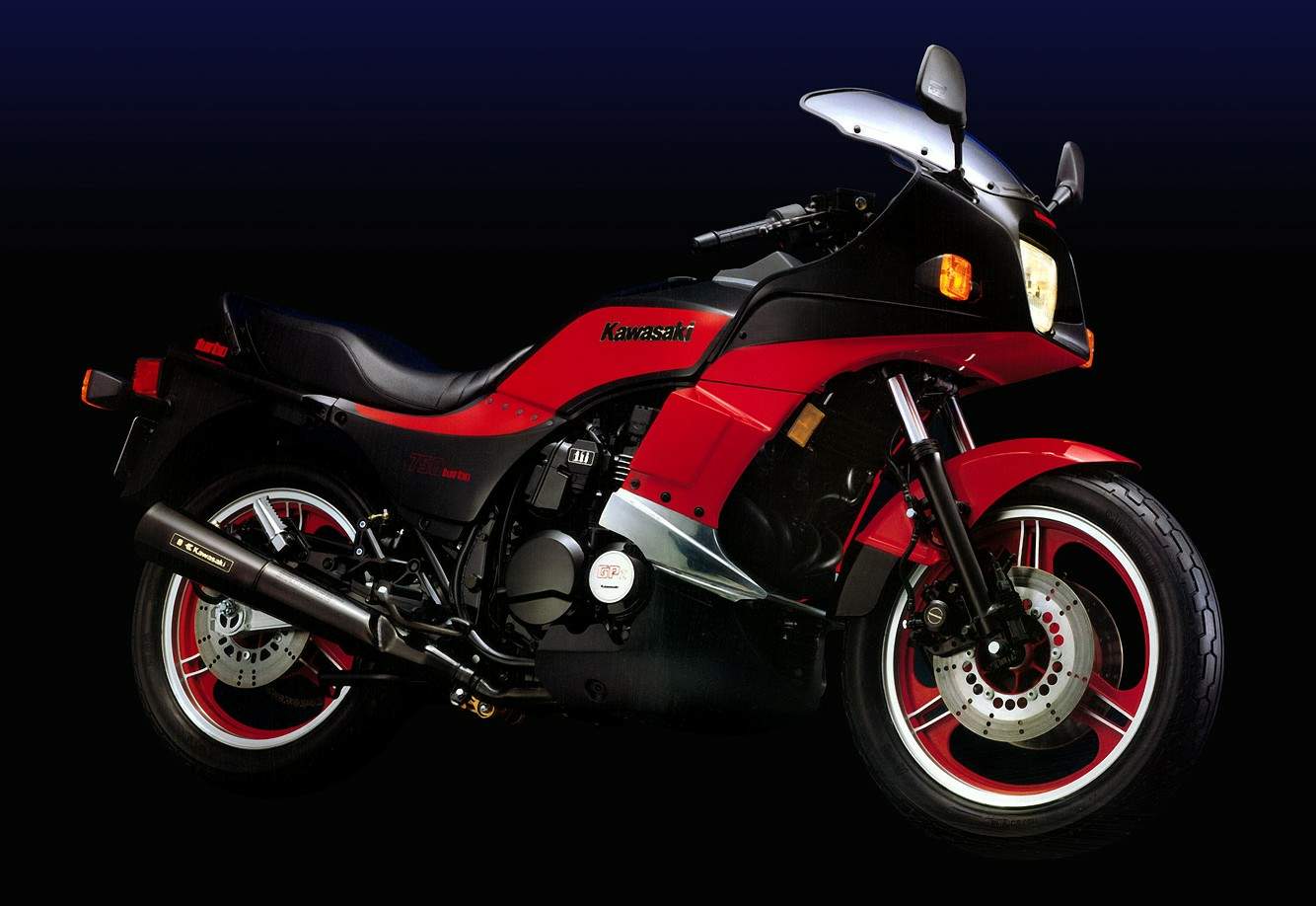
From the 1972 Kawasaki Z1 to the 2015 Ninja H2, Kawasaki has always been capable of producing mind-bendingly fast superbikes. Therefore it’s not surprising that the GPz750 Turbo was the fastest of the turbo production bikes. The 738cc, 112bhp, turbo four-stroke was by far the most powerful motor in the class, allowing the bike to achieve an impressive 10.71 quarter-mile time - in 1984! To produce that power Kawasaki took its already advanced GPz 750cc motor and went to town, completely rebuilding it with reinforced gearbox internals, racing pistons and a new exhaust.
Kawasaki also managed to achieve a milestone with the GPz750 Turbo. For the first time, a motorcycle manufacturer had managed to produce a small capacity bike with the performance to rival conventional 1000cc sportsbikes. For reference, the larger Kawasaki GPz1100 produced 3bhp less than its boosted brother; the Turbo was a genuine competitor.
With its impressive performance, easily tuneable engine and good looks, the Kawasaki is remembered as the best of the turbo bikes.
Unfortunately, even with the success of the GPz750, manufacturers quickly moved away from forced induction. Ultimately, the turbo bikes as a whole were too expensive to produce, the bikes were too heavy and chassis technology just wasn’t advanced enough to handle more power.
5. 2015 Kawasaki Ninja H2
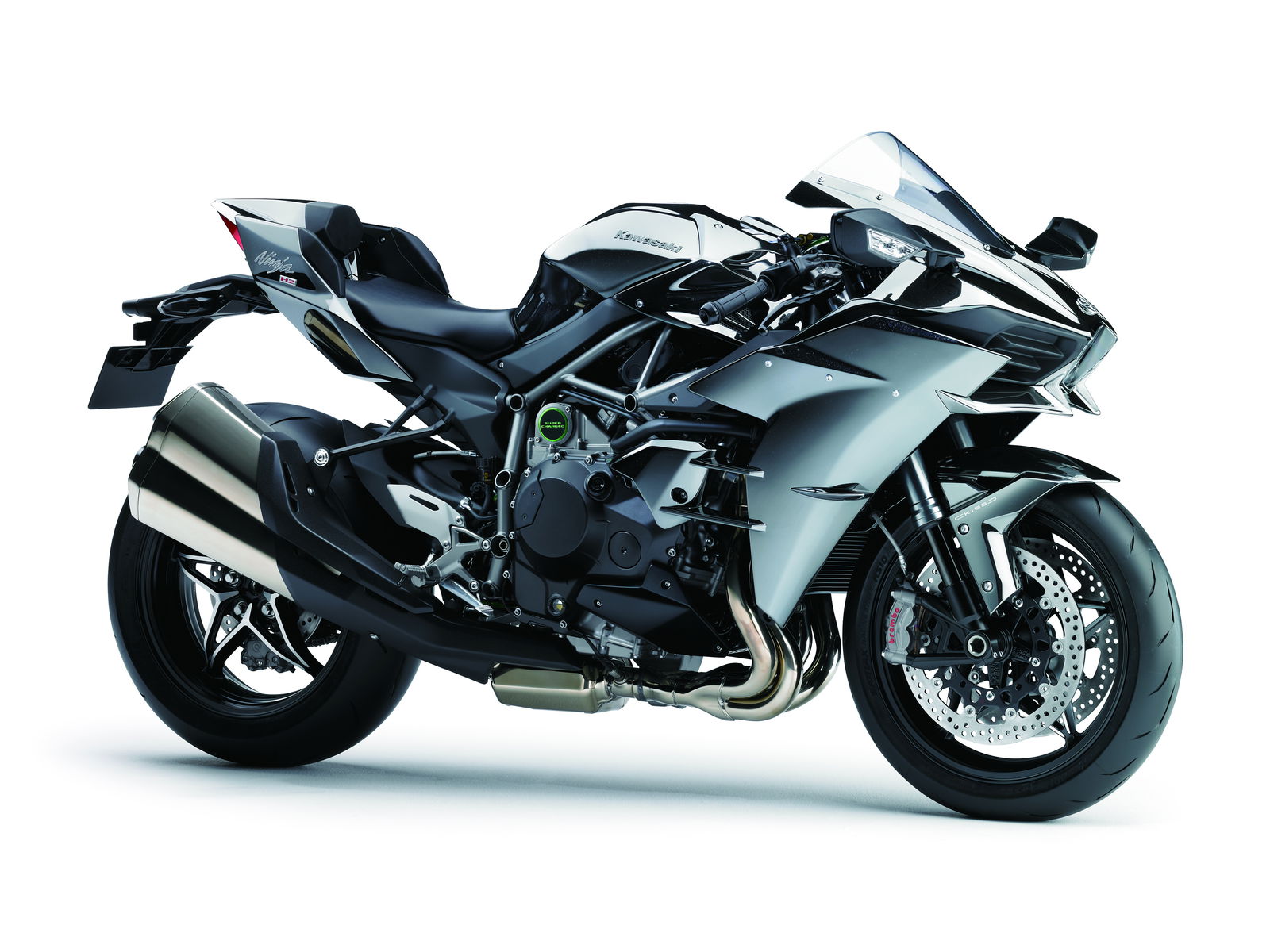
Since the 1980s we’ve seen a handful of forced induction bikes; the Bimota DB11 VLX and Vyrus 987 C3 4V being two of our favourites, but they can hardly be called ‘factory’. The Bimota is basically a glorified Ducati 1198 and the Vyrus is a limited production, hand-made piece of artwork. These are not the kind of bikes you pop down to the dealer to have a casual look at.
Luckily for us, Kawasaki was brave enough to return to the forced induction game. In mid 2014, when Kawasaki first revealed that it was developing a 300bhp supercharged hyperbike, the automotive press was taken by surprise; everyone had an opinion. Some felt that the bike would be too powerful and heavy, while others (myself included) didn’t care about dynamics, we just wanted to see the return of a factory boosted machine.
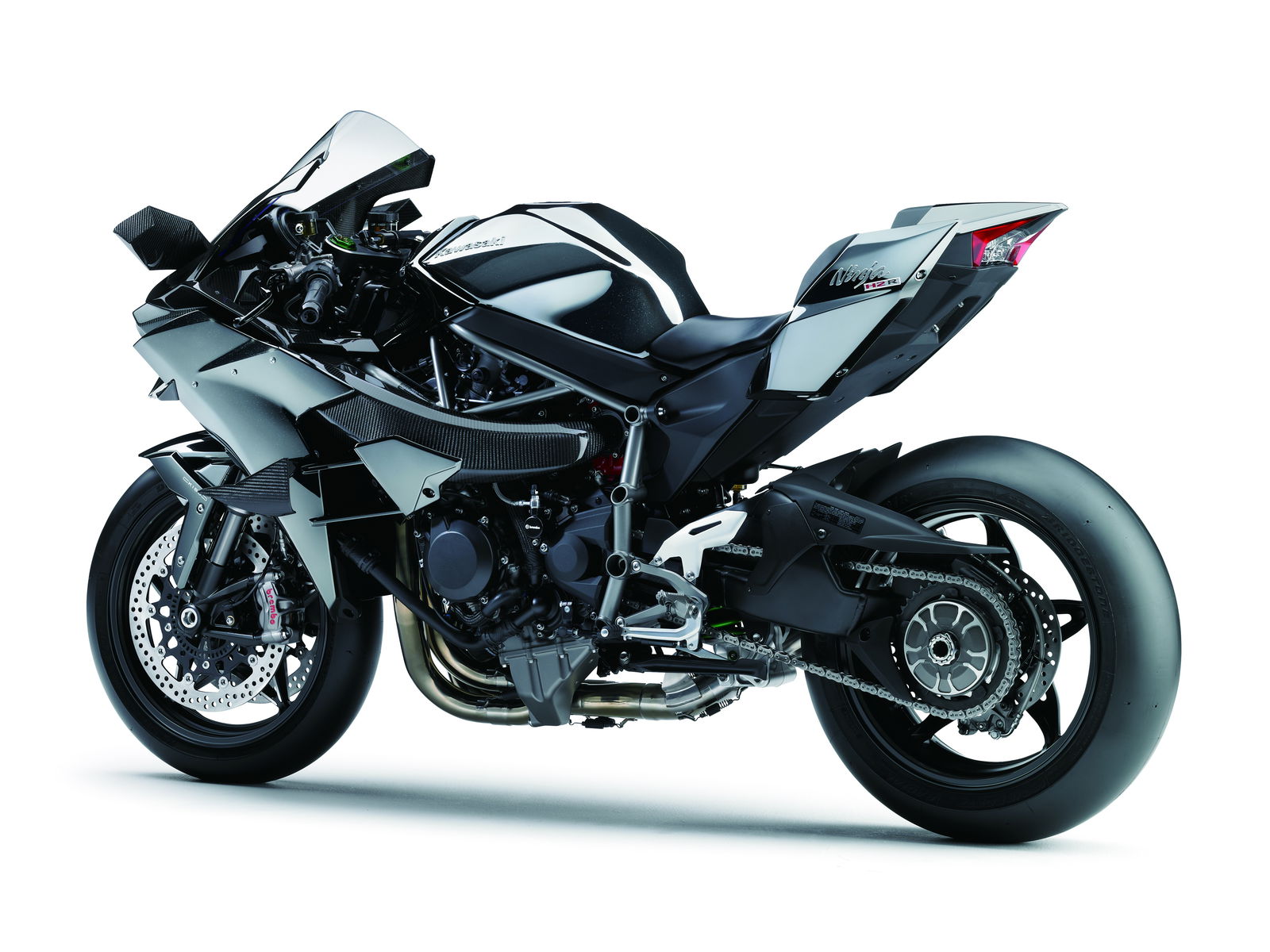
Putting the argument of ‘too much power’ aside, Kawasaki picked the perfect time to develop such a bike. With modern chassis technology, advanced electronics and sticky rubber, it is now possible to produce a manageable high horsepower machine. Released in early 2015, the 210bhp road bike comes in at a very reasonable £22,000. There’s nothing else on the market like it, and even though the throttle response has been reported to be a little ropey, what do you expect from a bike with hot hatch levels of power? At 238kg it’s not going to worry a 204kg BMW S1000RR around a track, but ultimately that’s not the point. Kawasaki has shown what is technologically possible.
And if 210bhp isn’t enough for you, you could always go all in and purchase the £41,000, 300bhp track only H2R. You know a bike is a serious bit of kit when you have to sign a disclaimer which states that you will only ride it after using tyre blankets, and that you should store the bike off the ground to avoid damaging the advanced rubber. Ironically, the bike is actually too loud for most UK tracks, but don’t worry, you can always take it to the Isle of Man and let rip. At TT 2015 Kawasaki rider James Hillier kit a GPS verified 206mph down the fearsomely fast Sulby straight on what was supposed to be a demonstration run. Brilliant.
So CTzens, do you want to see more forced induction road bikes being produced? Or are today’s refined superbikes enough for you? Let us know!
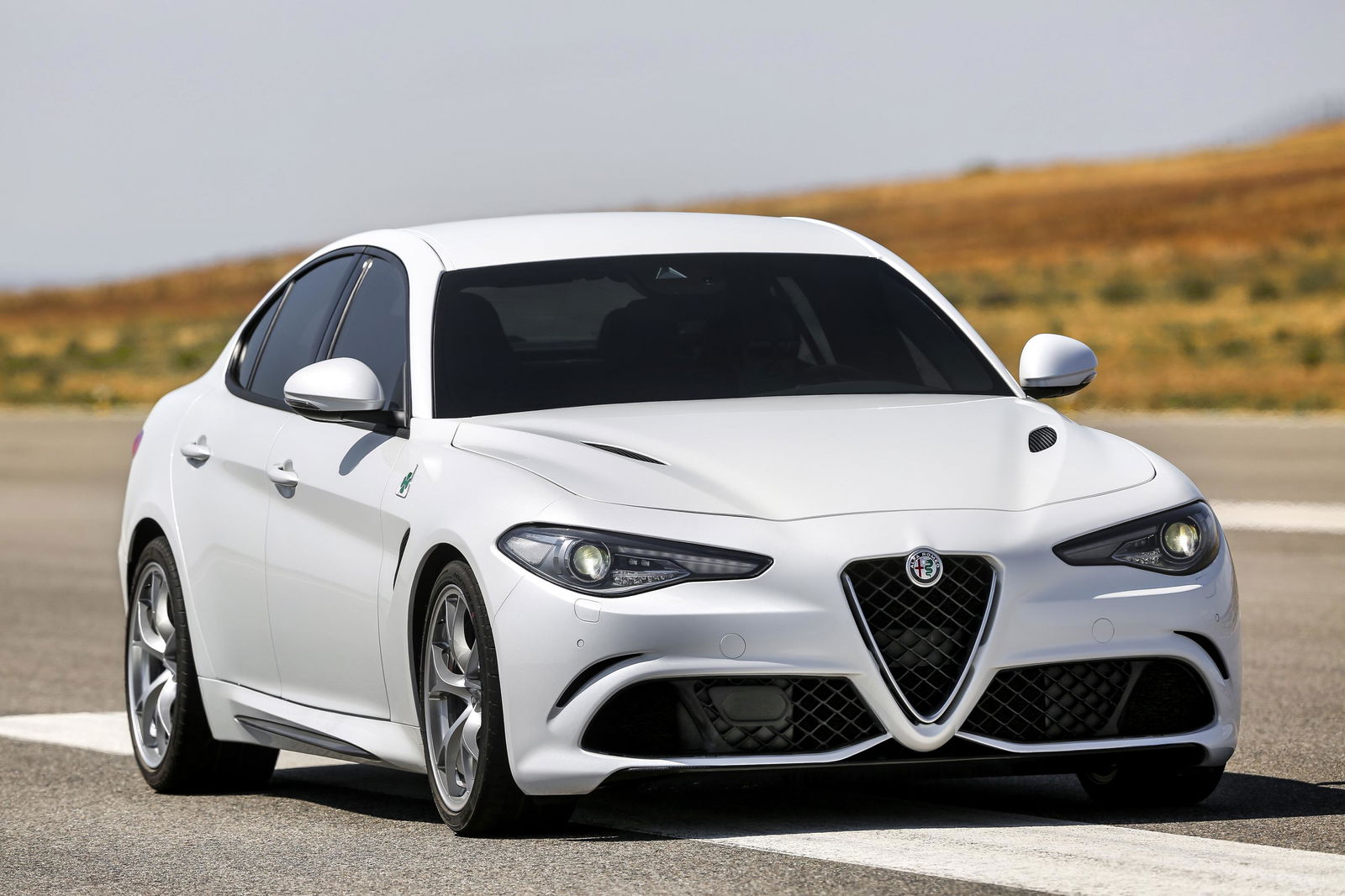
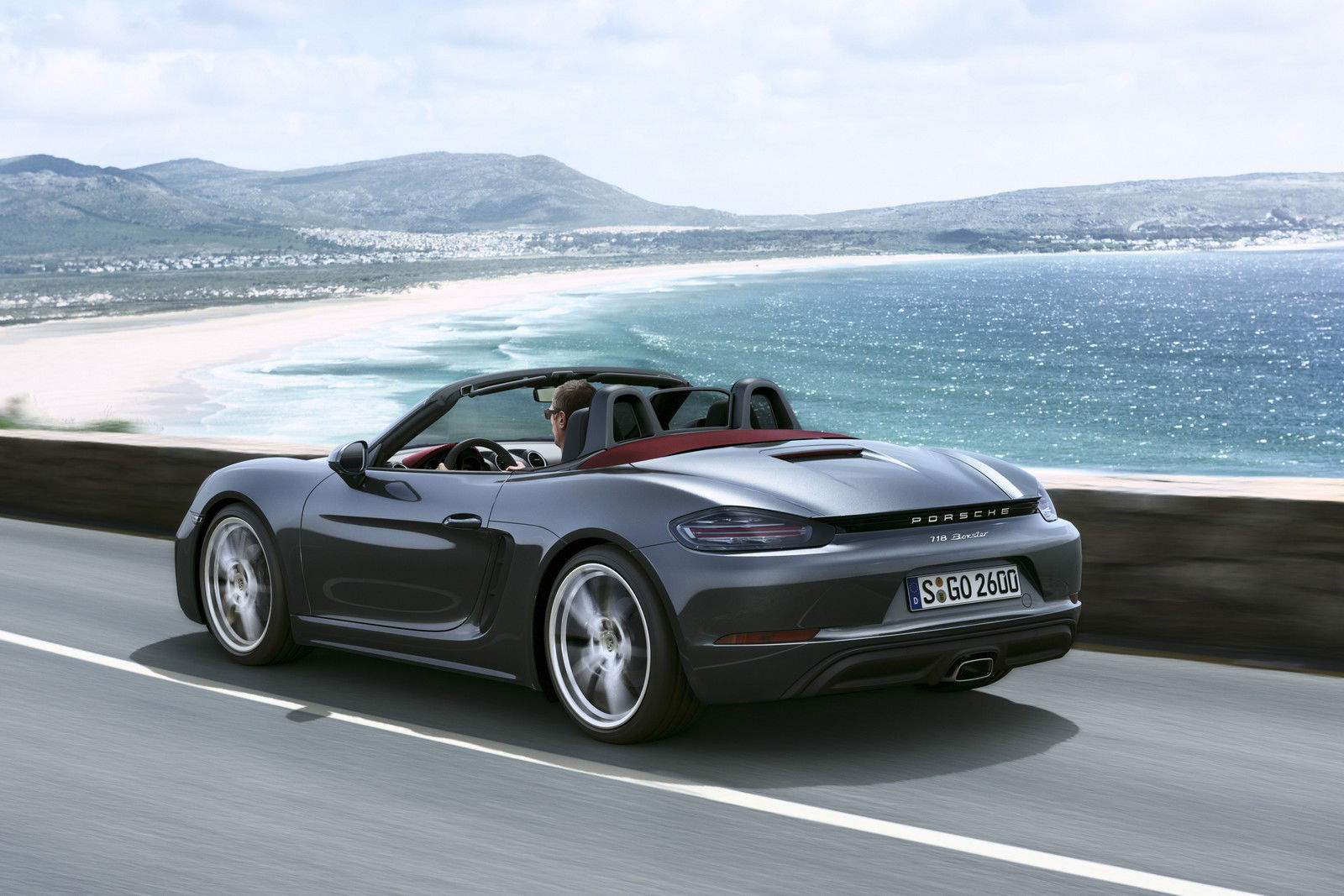
Comments
my dad used to have a z1r turbo
i like the idea of a turbo bike, but it doesnt work properly, any biker knows that having the throttle in a stable position during a corner is important, with turbo spooling up it can effect it. Also, engine breaking can be severly decreased because the turbo can still be spooling going into a corner. For anyone not ridden a bike, brakes in corners are a big nono during any fast riding
I’m not too familiar with bikes, but that H2R blew my mind…
My old man has two CX500TCs, one of which he bought brand new in 1982, and you’re quite right, the turbo lag is shocking, but they’re such a nice bike overall. It’s everything you’d expect from Honda engineering.
There was a Royal Enfield Diesel Bullet. Many of you might not have the name before. The diesel version was produced only in India. It featured a Lombardini sourced single cylinder 4-stroke 500cc Turbo Diesel motor which produced about 10 bhp of power and had an impressive mileage of about 1.3 l/100 km. Though being underpowered, it had an impressive low-end torque. That thing could pull near about 200 kgs without any problems. The only problem was higher maintainance costs and could break anywhere type reliability. It was introduced in mid 70s and went on production till late 90s.
did I smell a kawasaki commercial here?
I have plans to turbo my 250 once warranty expires and aftermarket grows.
Ninja’s were always my favorite bikes. This has only made that stronger.
Pagination